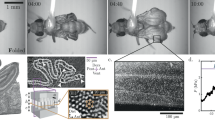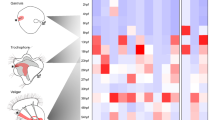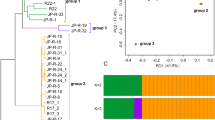Abstract
IN NATURE, August 22, 1907, I reported the discovery of a tsetse-fly (Glossina) in the Miocene shales of Florissant, Colorado. In going over the materials collected in the same locality in 1908, I find a second species of the same genus. It is preserved showing the lateral aspect, the abdomen arched dorsally, and the proboscis evident, though imperfect. It is about 10mm. long, the wing 7 mm., thus much smaller than G. oligocena. The venation is perfectly typical for Glossina, but the first basal cell bulges less subapically than in G. oligocena, its maximum breadth or depth being only 323 micromillimetres. The vein bounding the outer side of the discal cell has a double curve, as in the Œstridæ.
This is a preview of subscription content, access via your institution
Access options
Subscribe to this journal
Receive 51 print issues and online access
$199.00 per year
only $3.90 per issue
Buy this article
- Purchase on SpringerLink
- Instant access to full article PDF
Prices may be subject to local taxes which are calculated during checkout
Similar content being viewed by others
Author information
Authors and Affiliations
Rights and permissions
About this article
Cite this article
COCKERELL, T. Another Fossil Tsetse Fly. Nature 80, 128 (1909). https://doi.org/10.1038/080128d0
Issue date:
DOI: https://doi.org/10.1038/080128d0



